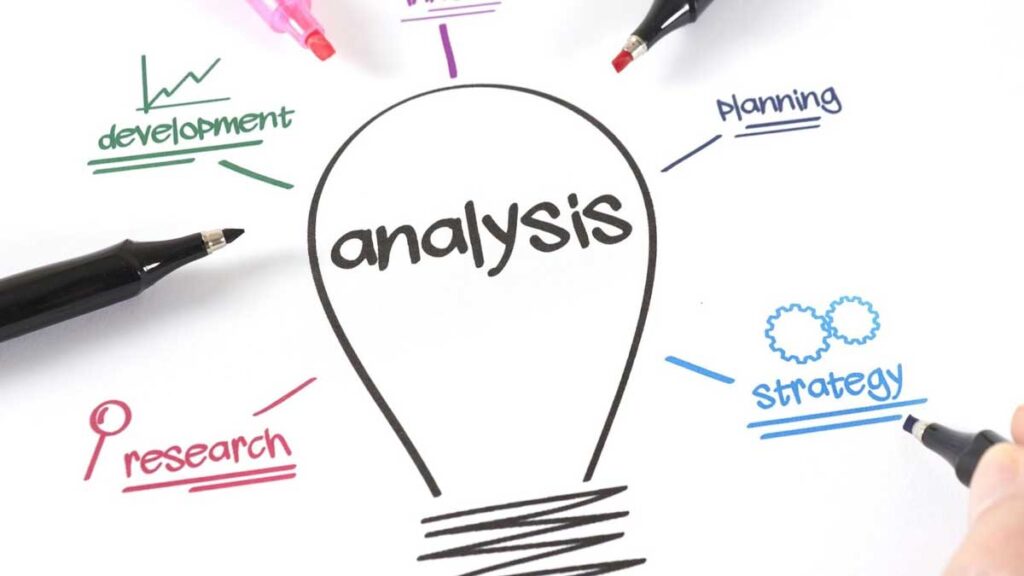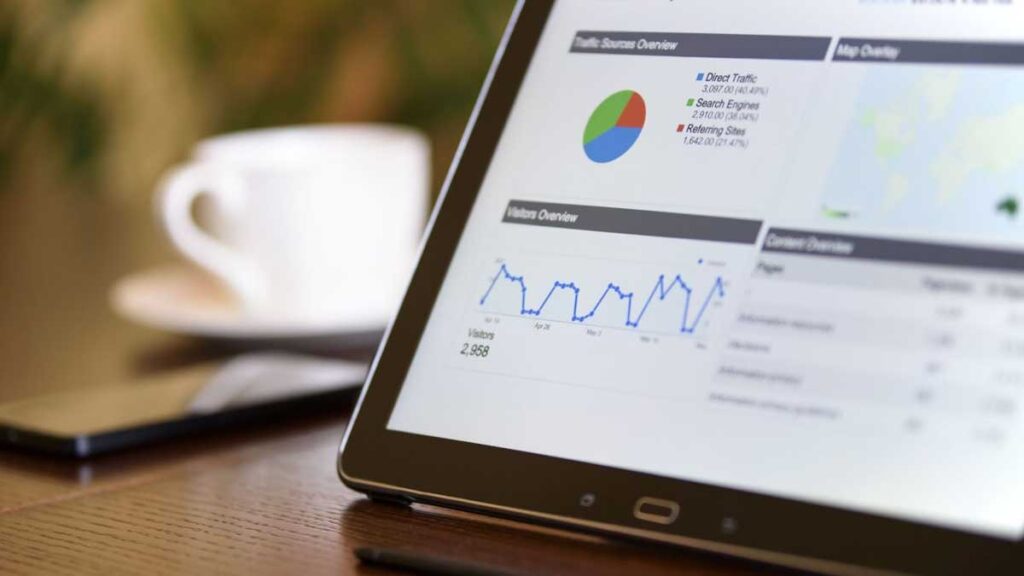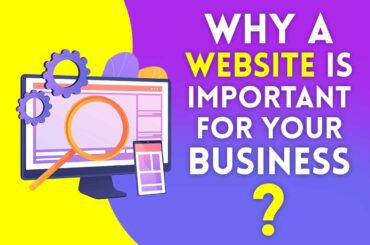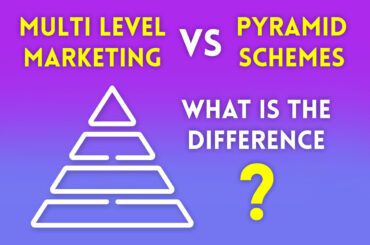
Businesses nowadays are developing in a quick-paced world. More effective corporate solutions are now available, thanks to newer technological innovations. There are many importance of business analytics. It has helped direct firms toward greater success. The field of analytics has progressed from merely presenting data to more collaborative corporate intelligence that forecasts outcomes and supports present-day decision-making.
You might wonder why business analytics is important. Don’t worry. This article will be your number 1 guide to understanding why business analytics is important.
Let’s see what we will cover in this article:
- What is business analytics?
- Why is analytics growing in popularity right now?
- Scope of Business Analytics
- Types of business analytics in detail
- Why business analytics is important
As you can see, we have a lot to cover, so without a do, let’s get started with the basics what is business analytics.
What Is Business Analytics?

Employing current technologies to improve company data from the past or present is known as business analytics. They are included in creating complex models that will fuel future growth.
The following steps may be included in a general business analytics process: data collection, data mining, sequence identification, text mining, forecasting, predictive analytics, optimization, and data visualization.
Every company today generates a sizable amount of data in a particular way. The advantages of statistical techniques and technologies are increasingly used by business analytics to examine historical data. This is done to unearth fresh perceptions that will assist them in making a strategic choice for the future.
To predict and incorporate insights into daily operations, business intelligence, a subset of the business analytics discipline, uses various tools and techniques like machine learning and artificial intelligence technology.
To obtain useful insights, business analytics thus combines the domains of computing and business management.
Why Is Analytics Growing In Popularity Right Now?
This decade’s hottest phrase is analytics. The goal of almost all business types is to use it to change decision-making. But why has it just gained such a following? Why does practically every corporation desire to employ business analytics experts?
The necessity, accessibility, and cost are the driving forces behind this quick drive. Let’s start with the first factor: businesses constantly feel pressure to innovate due to the fiercer competition. Additionally, clients have raised their expectations.
Thus, to adapt to forces driven by the market and survive, managers must act quickly and wisely. And analytics is a potential way to get the information you need to make faster, smarter decisions.
Organizations are collecting a vast amount of data regarding accessibility and affordability. This is mostly because of recent technological developments and the low cost of software and hardware. Companies have access to all available raw data, but they urgently require professionals who can interpret it all and produce actionable results.
Scope Of Business Analytics
There are many applications and uses for business analytics. It can be used for descriptive analysis, which uses data to comprehend past and present circumstances. The efficacy of earlier business decisions is evaluated using this descriptive study of the company’s present market position.
It is employed in predictive analysis and is frequently used to evaluate past business performance.
Prescriptive analysis is another use of business analytics to develop optimization strategies for improved business performance.
For instance, business analytics is used to establish prices for various products in a department store based on historical and current data.
Types Of Business Analytics In Detail
1. Descriptive Analytics
This might be referred to be analytics in its most basic form. The initial stage of processing big data entails breaking the data down into manageable parts because its immense quantity is beyond human comprehension.
This analytics serves only to summarize the results and explain what has occurred. The use of descriptive statistics (arithmetic operations, mean, median, max, percentage, etc.) on already-existing data is what is commonly referred to as advanced analytics or business intelligence.
According to some estimates, 80% of business analytics consists primarily of descriptions built from summaries of prior performance. Making unprocessed data comprehensible for managers, shareholders, and investors is a crucial step.
In this manner, it becomes simple to recognize and address the areas of strengths and weaknesses to aid in strategic planning. The two primary strategies are data aggregation and data mining, and it is stated that the sole purpose of this method is to comprehend the underlying behavior and not to make any estimates.
Companies can use historical data mining to examine consumer behaviors and interactions with their brands to improve services, target marketing, and other business operations. MS Excel, MATLAB, SPSS, STATA, and other programs are utilized in this step.
2. Diagnostic Analytics
To understand why something occurred in the past, diagnostic analytics is applied. Drill-down, data discovery, data mining, and correlations are some strategies that define it. To identify the underlying causes of occurrences, diagnostic analytics examines data in greater detail.
Knowing what events and causes contributed to the result is useful. For the analysis, probabilities, likelihoods, and the distribution of results are primarily used.
Diagnostic analytics can determine why sales have increased or decreased over a certain year or years when there is a time series of sales data. But the potential of this kind of analytics to provide useful insights is rather constrained.
It only offers comprehension of the sequences and causal links while looking backward. Attribute importance, principal components analysis, sensitivity analysis, and conjoint analysis are a few methodologies that use diagnostic analytics. This form of analytics also includes training algorithms for classification and regression.
3. Predictive Analytics
Predictive analytics is utilized to make future predictions, as was already indicated. It is crucial to remember that this method can only forecast the likelihood of an event occurring in the future; it cannot predict whether it will happen.
To determine the likelihood of the outcomes, a predictive model builds on the first descriptive analytics stage. Predictive analytics’ core goal is to create models that allow users to interpret current data to extrapolate future events or, more simply, to forecast future data.
Sentiment analysis is one of the popular uses of predictive analytics. It gathers and analyzes existing text data from social media posts to determine whether a user is favorable, negative, or neutral about a particular topic (future prediction).
Consequently, predictive analytics involves creating and evaluating models that produce precise predictions. For learning and validating the data, predictive analytics uses statistics and machine learning techniques like random forests, SVM, etc.
Typically, constructing these models requires qualified data scientists and machine learning specialists. Python, R, RapidMiner, and other tools are among the most widely used for predictive analytics.
As it is impossible to get future data in any other way, future data projection depends on the current data. If the model is calibrated correctly, it can be utilized to support intricate sales and marketing forecasts. The accuracy of its predictions surpasses that of conventional BI.
4. Prescriptive Analytics
This analytics’ foundation is predictive analytics, but it extends beyond the three listed above to offer potential future fixes. It can indicate any good outcomes resulting from taking a certain path of action, as well as suggest different courses of action to get a certain conclusion.
As a result, it uses a robust feedback system that continuously refreshes its knowledge of how actions affect outcomes. Some functions linked to the desired result are optimized as part of the computations.
For instance, when calling a cab online, the program uses GPS to match you with the right driver from a list of drivers it has identified as being close by. It optimizes the distance as a result of quicker arrival.
Prescriptive analytics is also applied by recommendation engines. The alternative method uses simulation to combine all the important performance areas and create the best solutions. It confirms that the solution contains the necessary performance metrics.
The influence of the earlier forecasts will continue to be examined by the optimization model. Prescriptive analytics is the last frontier of advanced analytics or data science in today’s terminology because of its ability to offer advantageous alternatives.
Now let’s get into the main content, Why Business Analytics is Important.
10 Reasons Why Business Analytics Is Important
1. For Improved Customer Service

Analytics is used by businesses to make sure that their customer base is maintained. A business can assess customer interactions on its website, including purchasing habits, predicting purchases, frequency, and behavior, by collecting and analyzing data.
This enables a company to sell its services or products depending on the characteristics of its target audience and make the necessary changes to its platforms for improved performance.
It could be as simple as sending a reminder regarding items the customer has added to their cart but hasn’t yet purchased or developing a different product version. The ultimate objective is to satisfy and retain customers.
2. Lowering Employee Turnover
The science and art of connecting data to find and share insights about your workforce that might aid your ability to make better business decisions is known as workforce analytics.
Workforce analytics is the term used in this department to describe business data. The era of workforce analytics, often known as “HR analytics,” has begun due to the drive to comprehend the relationship between data and know what influences labor trends.
It is equivalent to guessing to make major people’s decisions without data to support them. This issue has long prevented HR from having a greater impact on business outcomes.
Continuous learning is the only effective technique to keep mastering the information in your possession.
3. For Better Decisions, Better Results
Efficiency is increased through making informed decisions. For instance, they need to know who would generate the highest revenue when choosing suppliers.
Based on customer feedback, order fulfillment speed, quality, and other variables, they can use analytics to monitor supplier performance. This knowledge will help them choose the best choice for their business.
Additionally, a balance between our capacity for quick response and a clear business strategy is required. You can use this to assess whether the actions taken are appropriate. You should consider whether any internal issues are preventing the company from moving forward and, if so, what you can do to fix them.
4. To Watch Out For The Competition
Nearly every business nowadays is aware of its rivals. One of the best ways to stay competitive is to understand your competitors, their strategy, USPs, and what they’re up to.
Companies frequently do a SWOT analysis to get a sense of how their industry is performing overall. The dynamics and operations of businesses are undoubtedly changing as a result of business analytics.
We shouldn’t undervalue its potential. If you haven’t already, consider implementing it into your business since more and more companies are using it to make decisions.
5. To Carry Out A Market And Consumer Analysis

You already have a plan that satisfies the goals that you derived from the marketing strategy you came up with when you first started your business plan.
You must evaluate your client database and market positioning while evaluating the performance of your company. Your marketing strategy should be updated regularly, like your business strategy.
You have the chance to step back and analyze your plan during a business review to take another look at elements like:
- Changes.
- Developing new services.
- Changes in the needs of your customers.
- Various outside variables, such as the economy, new technologies, and so forth.
Any sort of client feedback can assist you in determining where changes can be made. For instance, your employee numbers, services, goods, or operational procedures. At the same time, you discover a lot of information about your consumers, like their interests, hobbies, and demographics.
However, it’s crucial to remember that reviews can be very powerful. They can give your company the flexibility it needs to outperform the competition quickly. It’s crucial to consider all the effects of any adjustments. You will always need to plan your finances and resources properly.
6. Better Informational Decision Making
If you’re facing a crucial strategic decision, business analytics might be a useful tool.
Uber, a ride-hailing business, employed prescriptive analytics to determine whether the current generation of its Customer Obsession Ticket Assistant (COTA), a tool that employs machine learning and natural language processing to assist agents in reacting to support tickets more quickly and accurately, will be more successful than its previous incarnation.
The company discovered through A/B testing—a technique for contrasting the results of two alternative options—that the revised product resulted in quicker service, more precise resolution recommendations, and higher customer satisfaction ratings. These discoveries not only sped up Uber’s ticket-resolution procedure but also helped the business save millions of dollars.
7. Greater Revenue
Businesses that adopt data and analytics projects may see huge financial gains.
According to McKinsey research, businesses that invest in big data have an average profit boost of 6%, which rises to 9% for investments made over five years.
In line with this trend, a recent study by BARC revealed that companies that can quantify the benefits of data analysis report an average 8% rise in sales and a 10% decrease in expenditures.
8. Enhanced Operational Effectiveness
Analytics can be utilized to improve business operations in addition to financial gains.
Predictive analytics is widely used by businesses to identify maintenance and operational difficulties before they develop into more serious ones, according to a new KPMG report on emerging trends in infrastructure.
According to a poll, a mobile network operator uses data to predict disruptions seven days in advance. With this knowledge, the company can better plan its maintenance schedule to avoid interruptions, which will not only help it reduce operating expenses but also guarantee that its assets are performing at their best.
9. Improve Marketing Initiatives

Real-time data is also useful to marketers in building more persuasive and successful marketing efforts. The necessary data from previous campaigns are easily accessible by business owners, who can then identify what is missing.
Business owners may develop effective marketing strategies using indicators like cost per lead (CPR) and click-through rates (CTR). Because they have abandoned all speculation and invested only in verifiable data, businesses using BI today can get a higher ROI.
10. To Visualize Your Data
When information is presented to people visually, their comprehension of it increases. A business owner can “see” data when it is visualized because of BI-related technology. Surveys should provide a practical illustration of how data visualization improves data comprehension.
To determine the effectiveness of your initiatives, you can also use CSAT, or customer satisfaction scores. Data is thus made more informative and understandable through BI. Visualization technologies are crucial because of this.
So that’s it. We hope you have learned something new by reading this article.












